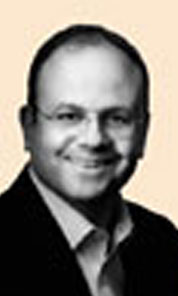New York (Reuters) – Put away the machines and bring back the humans. Wall Street is setting aside its algorithms and complex models and turning to experts for clues on how to make money in an uncertain world, turned upside down by Japan’s disaster and Middle East uprisings.
For at least one fund manager, that meant hiring a pair of nuclear physicists.

Turner Investment Partners, which oversees $16 billion in assets, enlisted the two scientists to help fill the information void when reports came out of radiation leaking from Japan’s nuclear power plant after the March 11 earthquake and tsunami.
“We have them so as to ascertain the severity of the leakage and the risks to other places like Hong Kong, which is 2,000 miles away,” said David Kovacs, Turner’s chief investment officer who manages money for hedge funds and other investments.
For Mohamed El-Erian, chief executive of PIMCO, the world’s largest bond fund with $1.1 trillion under management, making sense of the fast-changing geopolitical environment meant traveling personally to the Gulf to learn first hand how people see the situation and what it implies for the global economy and markets.
Both fund managers were grasping for insight, trying to stay half step ahead of a parade of seemingly contradictory headlines and gain an edge that can pay off handsomely in today’s lightning-paced markets.
Usually asset managers and hedge funds can use risk models to help them navigate. But last week they were glued to the news screens watching headlines and scrambling for reliable information after Japan’s earthquake and tsunami of March 11 turned into a nuclear crisis.
Models didn’t work any more. The result was severe market and investor stress. Volatility, a measure of fear and uncertainty, leaped last week. The yen rose an eye-popping 8 percent in three days before central banks intervened. Japan’s Nikkei index ended the week down 10 percent and oil and global stocks see-sawed.
For many big money managers it meant placing very short-term trades, for fear the world would change again on a dime.
George Soros, the legendary hedge fund manager, once said he would rely on “animal instincts” — and a pain in his back — not models, to tell him when something was wrong with his portfolio.
“The backache didn’t tell me what was wrong – you know, lower back for short positions, left shoulder for currencies – but it did prompt me to look for something amiss when I might not have done so otherwise,” he said in his 1995 autobiography, “Soros on Soros.”
“UNKNOWN UNKNOWN”
A wave of shocks the past decade has left Wall Street at times rudderless — the Sept. 11. 20011, attacks, a credit crisis that morphed into a banking crisis and sovereign debt crisis. In the two and a half years since Lehman Bros collapsed, money managers and hedge funds have sought a way to deal with such shocks.
For Kovacs, it was a question of developing models that take into account what he calls the “unknown unknown.”
“We did not stop using the methodology of our investment process, but we’ve changed the risk control concept such that it reduces the negative impact associated with the unforeseen,” said Kovacs.
In practice, says Kovacs, that means he has relied more on derivatives to hedge over the last year and a half. “You have to have some shock absorbers,” he said.
Peter Lee, chief technical strategist at UBS in New York, describes a herd mentality where short-term hedge funds and high frequency traders driven by technical targets gravitate towards widely watched market levels, trying to catch a bounce. “The news flow is all over the map,” said Lee.
“What normally happens off a geopolitical news sell-off is you get down to an oversold condition and then you have these short term, very-first-money traders or momentum traders coming in trying to scalp this market.”
Investors shorten their time horizon after an unexpected event because information loses context and it’s difficult to measure the implications. Analyst revisions of earnings estimates are sketchy at best and economic data is outdated.
“People lose their faith in these valuation measures because they don’t know how valid they are anymore, and that’s when they start to trade on more recent types of information,” said Ed Peters, a partner at hedge fund FirstQuadrant in Pasadena, California, where he helps oversee about $18 billion in assets under management.
Reverting to outside experts like physicists is one way to try to fill the information void.
Turner took the route of shorting stocks of uranium-related companies including Cameco <CCO.TO>, which fell nearly 24 percent to a six-month low during the week.
“We did not short the Nikkei, the yen or Japanese equities because it just would be immoral,” Kovacs added.
